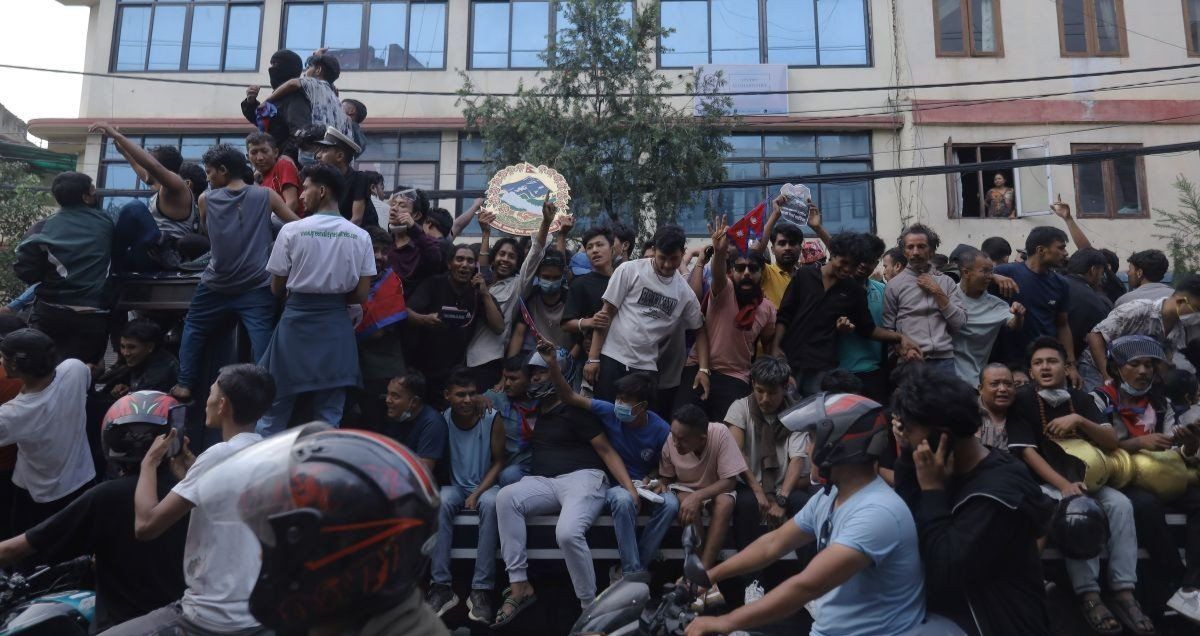The Nepalese government’s decision last week to ban several social platforms has touched off an ongoing wave of deadly unrest in the South Asian country of 30 million. The parliament has been burned, dozens of protesters have been killed, and earlier this week the prime minister resigned.
Nepal, which abolished the monarchy in 2008 after a decades-long Maoist insurgency, has been no stranger to political upheavals since then. But this is the first time such a strong and sustained protest movement has emerged, and it is being led by young people.
To understand why this so-called “Gen Z” revolution is taking place, let’s use three terms that will be familiar to our very-online, younger readers.
“Sus.”
“Nepo babies.”
“Securing the bag.”
Let’s start with “sus.” One of the underlying sources of resentment is corrupt politicians. How bad is it? A watchdog group ranked the Himalayan nation as one of the most corrupt countries in Asia.
The examples are manifold, but to take one good one: $71 million was embezzled during the construction of an airport completed last year. Corruption is reportedly rife among low-level police officers. And Nepali officials reportedly stole funds from people seeking work in the United States, promising to provide papers that would allow them to enter the US as Bhutanese refugees.
All of that is extremely “sus” behavior — small wonder that public trust of politicians in Nepal ranked 121 out 137 countries surveyed by the Center for South Asian Studies.
This bleeds into the resentment of “nepo babies” – ie, the rich kids of powerful elites. Nepal is one of the poorest countries in Asia, but that hasn’t stopped the children of politicians from living lavish lifestyles, which they often flaunt openly on social media. Ahead of the protests, compilation videos of government officials' children went viral on TikTok. In one, images of Sayuj Parajuli, the son of former Nepali Supreme Court Chief Justice Gopal Parajuli, was posted with the caption “Openly flexing luxury cars and watches on social media. Aren’t we tired of them by now?”
Underlying much of this resentment is the challenge of “securing of the bag”, ie, making a viable living. Many Nepalis, especially young ones, have a hard time finding jobs. The official unemployment rate is 12.6%, but youth unemployment is north of 20%. As a result, many young people have been forced to seek opportunities abroad, especially in construction and agriculture.
This all erupted last Thursday when the government banned 26 social media sites to quell the “nepo babies” videos and the targeting of politicians online. Thousands of young people, wearing school and college uniforms to emphasize their age, took to the streets. Although the ban was later lifted the unrest and uncertainty have continued.
Could outside players get involved? Nepal is sandwiched between Asian giants India and China, which have both vied for influence there in the past, in part because of Nepal’s ample hydropower resources. But for now, at least, Eurasia Group expert Rahul Bhatia says “China and India are taking a wait-and-watch approach.” Both countries have called for the restoration of peace and stability, but are avoiding direct intervention. “Any country seen as close to the Nepalese government would risk incurring the anger of the protestors,” says Bhatia.
So what’s next? Protesters are demanding accountability from the government. Discontent has grown toward Nepal’s two dominant political forces — the Nepali Congress and Prime Minister Oli’s Communist Party — which are governing together in a coalition for the first time. And after security forces killed 19 protesters, domestic and international institutions are calling for investigations into whether there was “unnecessary or disproportionate use of force.”
“It is unclear what the new Nepalese political order will look like,” says Bhatia. “ But one thing that’s clear is that the old guard of Nepalese politicians, who had taken turns at the helm, will not be a part of it.”
Or, to put it in the proper Gen-Z vernacular, “they’re cooked.”
More For You
We can't agree on much today. But thanks in part to cofounder Jimmy Wales, we can agree on Wikipedia.
Most Popular
Think you know what's going on around the world? Here's your chance to prove it.
A Democrat won Miami’s mayoral race for the first time in nearly 30 years. The Republican defeat will ring some alarms for the party – and their support among Latino voters.
